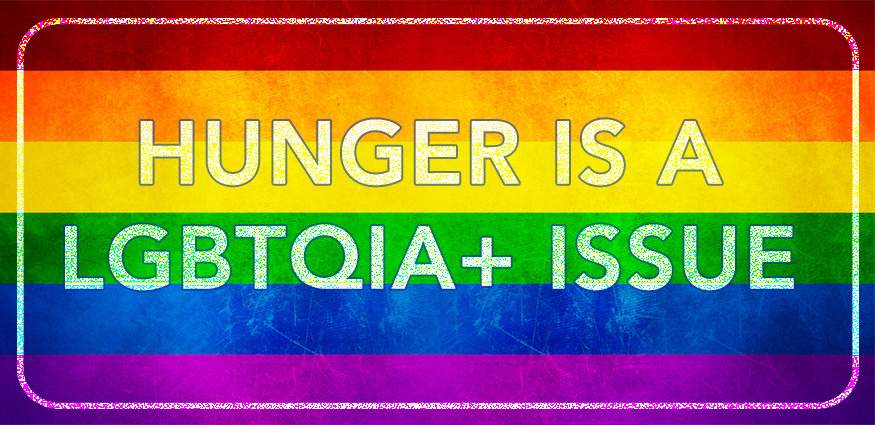
By Christiana Oatman, Development Assistant
This month, we’re celebrating Pride by learning about and honoring LGBTQIA1 culture and history. But we know that hunger is absolutely a queer issue – every month of the year.
According to a 2016 study by the Williams Institute, a UCLA Law think tank that researches sexual orientation, gender identity, and public policy, 27% of LGBT2 adults experienced hunger, as opposed to 17% of non-LGBT adults. The numbers are even starker when broken down by race: “Among LGBT people, 42% of African-Americans, 33% of Hispanics, 32% of American Indians and Alaskan Natives, and 21% of Whites reported not having enough money for food in the past year.” As an organization that is committed to racial equity and economic inclusion, we must acknowledge the intersectional approach needed to truly address the stark racial and queer disparities found in Alameda County.
Since COVID-19’s emergence, these numbers have increased. LGBTQIA people are more likely than heterosexual cisgender people to lose jobs and work hours, to experience food insecurity, and to have financial problems as a result of COVID.
Members of the transgender community are particularly affected by food insecurity. The Williams Institute examined poverty in the LGBT community from 2014 to 2017 in 35 states and determined that “LGBT people collectively have a poverty rate of 21.6%, which is much higher than the rate for cisgender straight people of 15.7%. Among LGBT people, transgender people have especially high rates of poverty—29.4%.”

The Williams Institute proposes some reasons for why some LGBT identities are more affected by poverty and hunger than others, including employment discrimination, location, level of education, and number of children. But even with those factors taken into account, “LGBT people are still more likely to experience poverty than their cisgender straight counterparts.”
A smaller study from the Williams Institute looked at the impact of poverty on LGBTQ folks here in California, both in Kern and Los Angeles Counties. 65% of the participants received food at a food bank, pantry, church, or other organization. “Respondents from Kern County, the area representing a rural or nonurban experience in California in the study, were limited to mostly religious-affiliated charitable food services. Several participants in both counties discussed concerns about potential LGBTQ-related rejection from these religiously-affiliated services.” In a follow up survey, 14% of respondents noted that they had avoided faith-based food pantries because of fear of discrimination.
Here at ACCFB, our mission is to create a hunger-free community. That mission includes everyone and doesn’t discriminate based on gender or sexual orientation. We continue to challenge ourselves, government institutions, and community partners to advance policies that address the intersectional nature of who experiences and does not experience hunger.
Please join us, this month and every month, as an advocate for equity and in uplifting all queer voices and stories. The movement is stronger with you in it. Together, we can end hunger for everyone.
1 We use the acronym LGBTQIA to stand for Lesbian, Gay, Bisexual, Transgender, Queer, Intersex, and Asexual, and it is intended as an inclusive term for the community as a whole.
2 The studies cited in this blog post use the term LGBT (Lesbian, Gay, Bisexual, Transgender).




